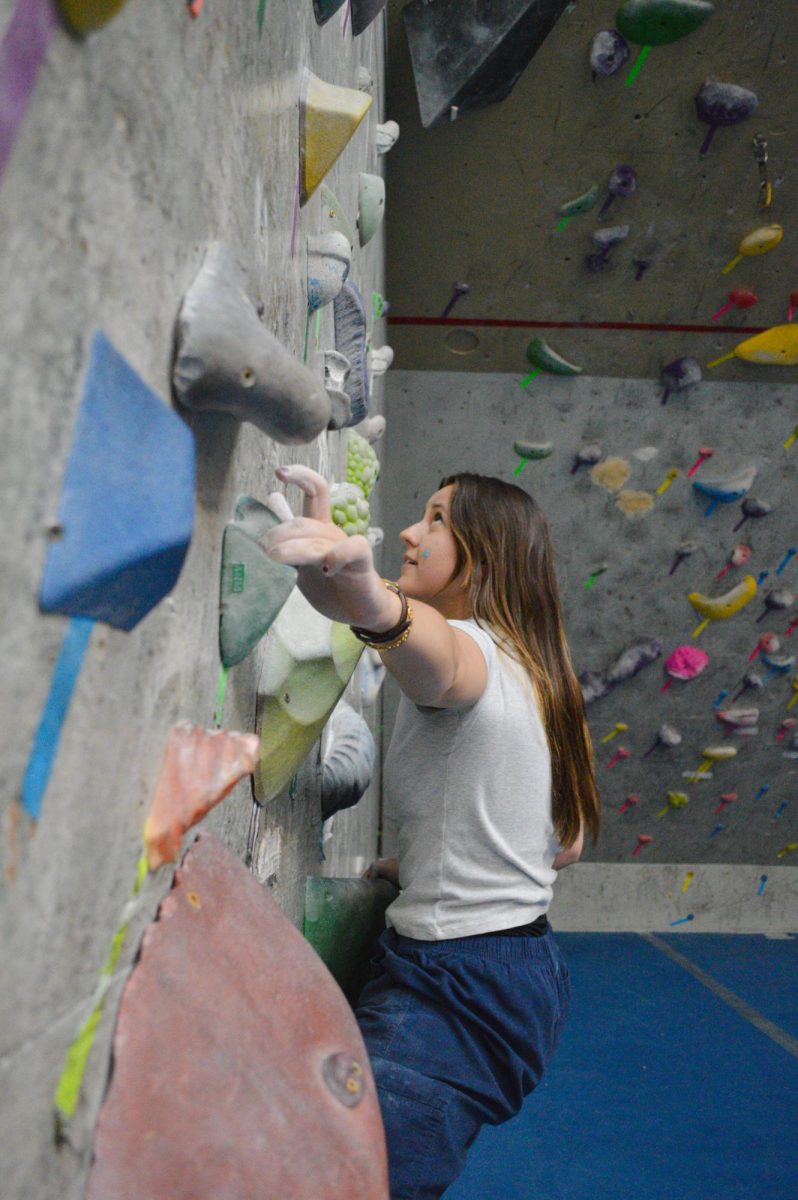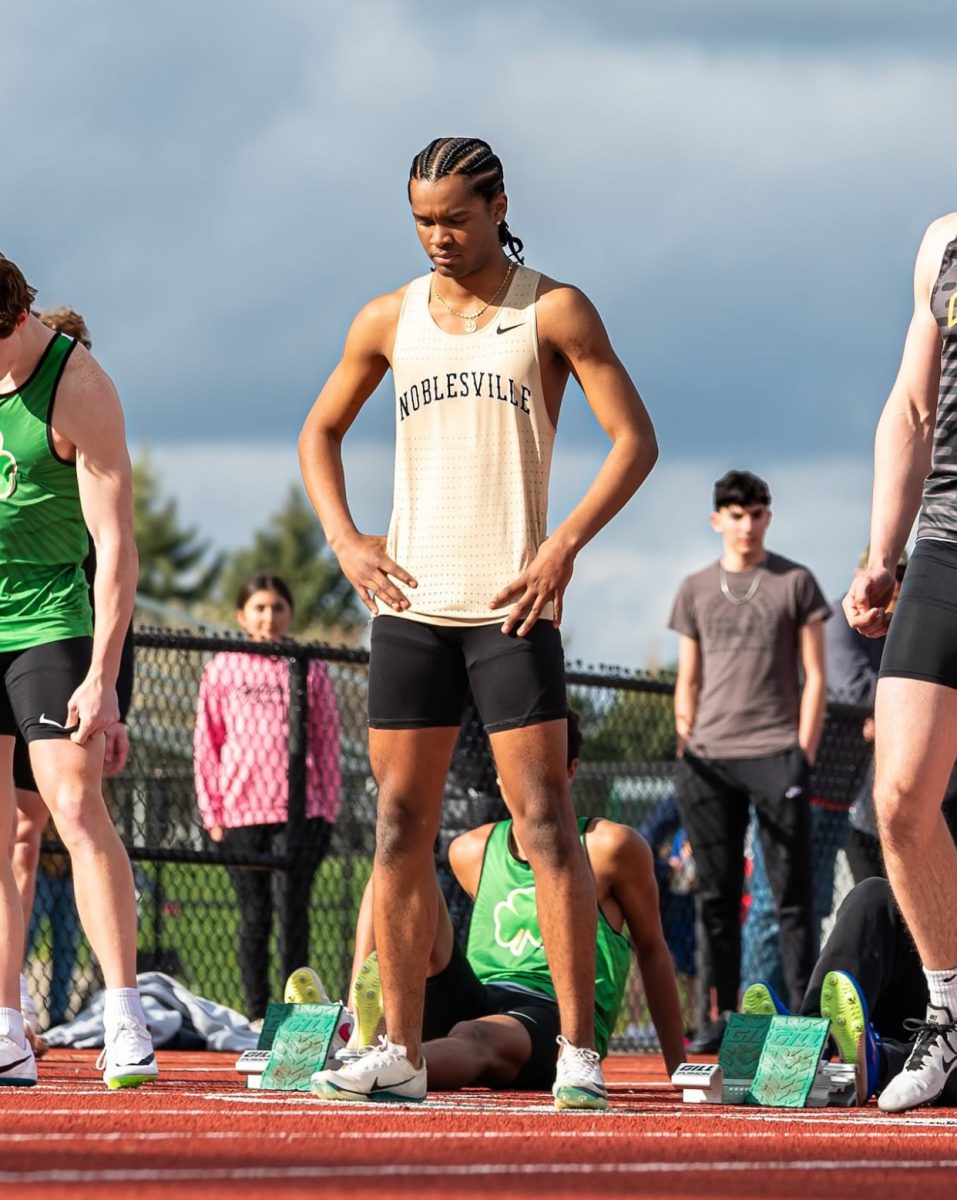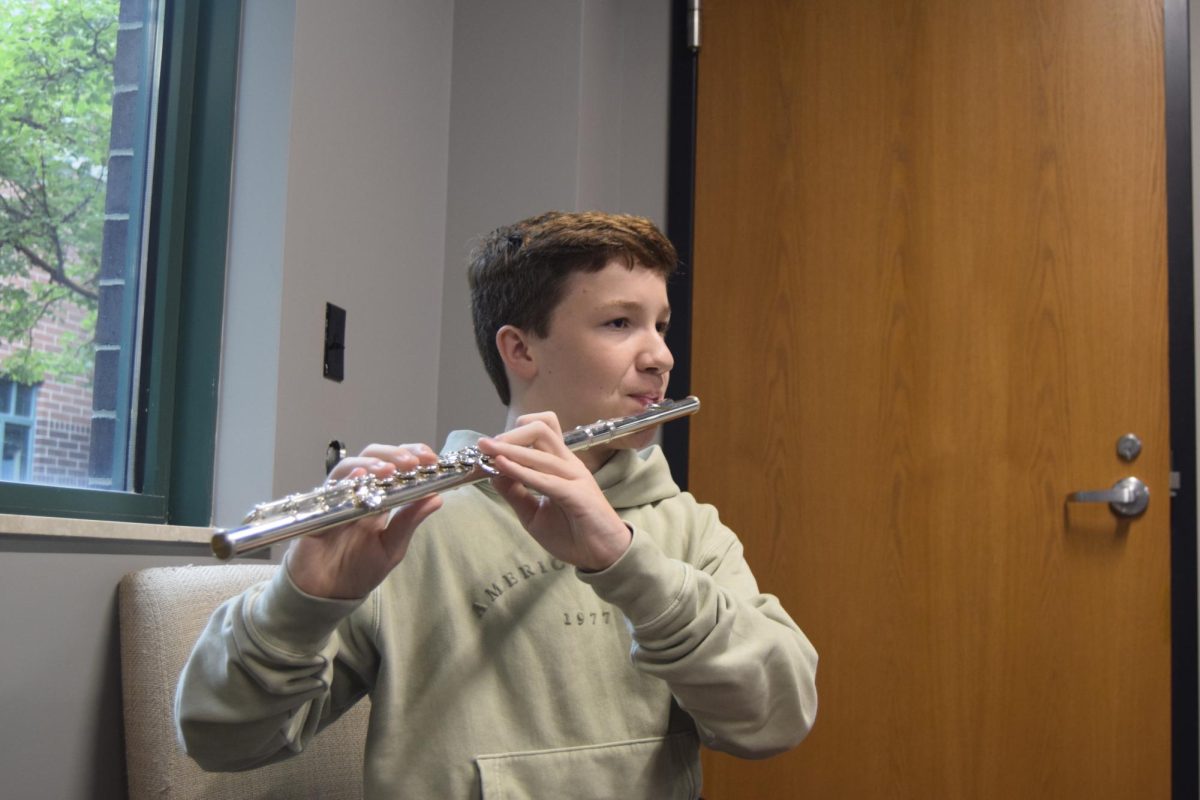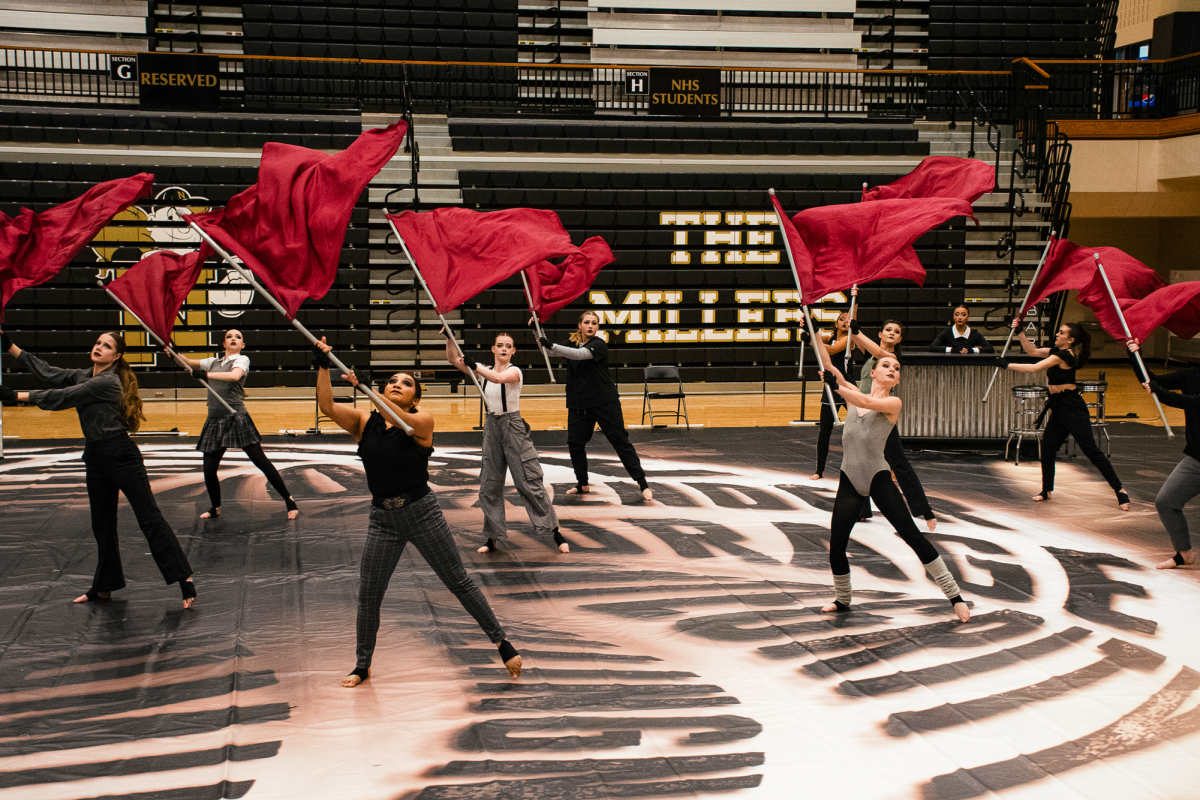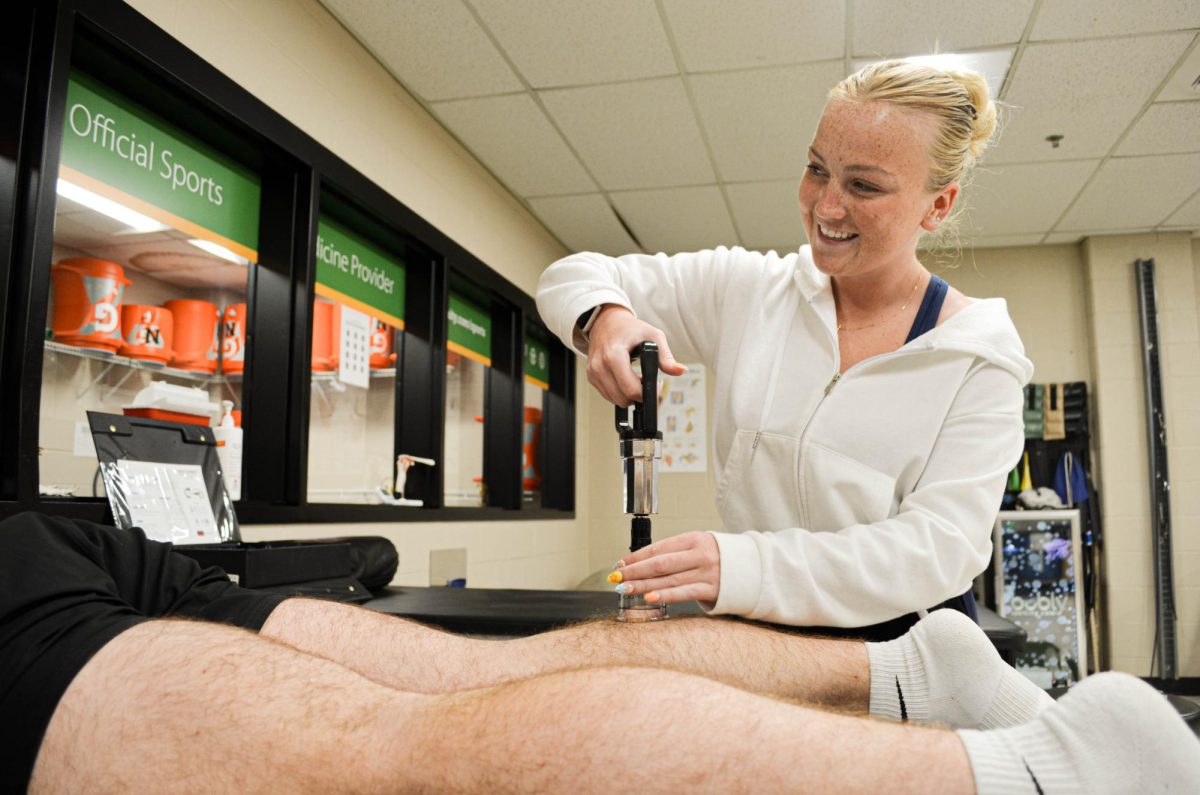The smell of chalk is what hits your first. Then the stench of sweat, and the warmth of bodies, all hard at work. You then feel the snug harness around your waist as a piece of rope suspends you in the air. An electric boost of adrenaline courses through your body as you begin to climb. You feel free, inside your home away from home: the rock climbing gym.
Rock climbing can be traced back to the late 1800s, but has recently evolved into a popular sport. Many students at NHS have begun to pick up this hobby, not only because of the physical exercise but the community surrounding the activity.
Local rock climbing gyms such as Climb Time Indy are centers for teen social interaction, allowing students of the sport to solve these “problems,” or routes, together. NHS senior Rachel Hacker has seen the impact that the sport has on her relationships first hand.
“I myself have introduced rock climbing to at least 15 of my friends and gone climbing with tons of new people I’ve met at Climb Time,” Hacker said.
Another climber, NHS senior Mason Bartosiak, shares similar experiences to Hacker when it comes to watching the increase of popularity in the sport. He says that social media has aided the popularity of the sport, as the creation of rock climbing-based content has inspired other communities to join in.
“I think rock climbing has had a snowball effect,” Bartosiak said. “It got popular in one community, and then everyone else sees it online, and then everyone thinks it’s cool and wants to do it.”
Aside from social media’s influence in bringing individuals to rock climbing, the sense of accomplishment derived from the sport is a prominent motivator for high schoolers. Similar to other individualistic sports such as golfing and bowling, where individuals don’t directly compete with one another, climbers are drawn back to the walls to improve on their previous efforts.
“My favorite part is the sense of accomplishment after every climb I’m able to send [complete],” Hacker said. “Working on a specific route for a couple sessions makes the actual send so much more fulfilling when I’m finally able to top it.”
In addition to the opportunities to improve on both their climbing skills and on individual routes, local climbing gyms also renew their routes. Climbing gyms, such as Climb Time or Hoosier Heights, reset multiple walls each week, resulting in 3-5 new “problems,” or routes, to master with each reset.
“Whether it be your first or hundredth time climbing there is always something new you can learn,” Hacker said.
Another factor that draws in new climbers is how easy it is to pick up: climbing is natural, like running it requires no training to participate adequately, but, according to new climbers, more enjoyable than running because of its complexities. Rock climbing equipment is also relatively inexpensive when compared to the equipment required for other sports. A harness typically costs $40, and shoes $60, whereas quality running shoes often run over $100, and baseball bats alone over $250. For Hacker, the simple process to become a climber let her focus on her newfound passion for the sport.
“Although I knew absolutely nothing about rock climbing nor was I any good, I could feel the potential I had there,” Hacker said. “I felt a spark and knew I had to be a part of it.”
The surface level benefits of climbing, a sense of accomplishment and personal fitness, manifest themselves into interpersonal benefits in the formation of rock climbing communities. Since rock climbing also involves problem solving, involvement in a rock climbing community allows climbers to both learn from those around them and more effectively solve and complete their “problems.”
“Rock climbing is a very social thing,” Bartosiak said. “Everyone gets together and focuses on one goal.”
All of these factors ultimately persuade new climbers to purchase memberships, signifying their commitment to the community. For senior Grant Irwin, the start of his rock climbing journey began, and continues, in excitement.
“My favorite rock climbing memory was buying a membership,” Irwin said. “I could tell that it was the start of a great journey.”
For many prospective climbers, their sense of belonging motivates them to abandon other, more common forms of exercise for this new trend. For others, their commitment and the community they involve themselves in will create moments they will remember for the rest of their lives.
“That same day [after going rock climbing for the first time], I quit my LA Fitness membership and signed up for a ClimbTime membership,” Hacker said. “That very decision was one of the best choices I’ve ever made.”



